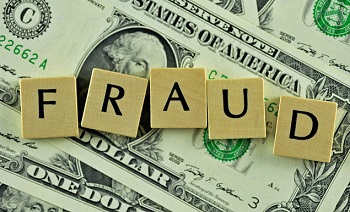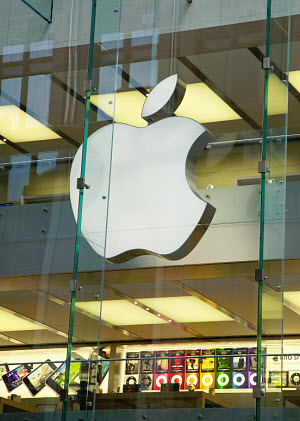Merchants are losing an average of $334 for every $100 of fraudulently made purchases on their sites.
According to the results of the recent True Cost of Fraudsm Mobile study, which is held annually by the Reed Elsevier from LexisNexis Risk Solutions, mobile commerce is facing a very expensive problem through fraud.
Merchants have been increasing to m-commerce on a steady basis and fraudsters are seeing this as an opportunity.
According to the study results, revenue from mobile commerce that is lost as a result of fraud has increased by 70 percent, last year. It rose to 1.36 percent in 2014 after having been 0.80 percent in 2013. Comparatively, among all merchants, 2014 saw an increase that brought the total lost revenue from fraud to 0.68 percent, after having been 0.51 percent in 2013.
There are a number of different avenues for fraud in m-commerce, due to the complexity of the broader range of payment channels, such as online payments programs and digital wallet apps. This in combination with added access channels such as native apps, shopping comparison apps, and mobile websites can considerably increase the risk of fraud.
The research has revealed that the average number of payment channels offered by mobile commerce merchants is 4.5.
 This is notably greater than the average number of payment types accepted by online or in-store merchants, which is 2.6. This higher number of acceptable types of payments has placed those companies at a notably higher level of fraud exposure.
This is notably greater than the average number of payment types accepted by online or in-store merchants, which is 2.6. This higher number of acceptable types of payments has placed those companies at a notably higher level of fraud exposure.
Twenty one percent of all fraudulent charges that were recorded were linked to mobile commerce. This is upsetting as the number of transactions that are actually occurring over smartphones continues to be a small percentage of the total sales for merchants. Last year, 14 percent of all of online transactions occurred over mobile channels.
According to the LexisNexis Risk Solutions vice president of corporate markets, Dennis Becker, “Mobile commerce is going to be more widely adopted by merchants because customers are clamoring for the convenience. To reduce customer friction and sell more through the mobile channel, now is the time for mCommerce retailers to put in place fraud prevention tools to counter the disproportionate amount of fraud that is currently occurring.”
While the service can be used at a physical store checkout counter, early adopters are using it as they shop over smartphones.
Mobile payments have been an area of considerable controversy, as some feel that this technology will rapidly take over plastic debit and credit cards, while others doubt that it will go anywhere because people are content with what they have, but where most seem to agree is that no matter the direction of the future, Apple Pay will be at the head of it – at least throughout the early years.
Now that the iPhone’s mobile wallet is available, the trends and potential for this type of service are becoming clearer.
So far, Apple Pay has shown to be quite popular among early adopters. The launch was fairly recent, as it occurred last October, and the number of people who have the necessary equipment to actually use the service is limited – as only the latest versions of the iPhone (6 and 6 Plus) are compatible – but so far, the owners of those devices who have enabled the service are using it. That said, they’re not necessarily making their purchases with their mobile wallets while in physical shopping locations. Instead, they are making m-commerce purchases with their iPhones.
This has caused many retailers to ensure that they have an Apple Pay option on their only checkouts.
 Among those that have been benefitting from Apple’s mobile wallet is SeatGeek, a search app for sports and concert tickets. Its checkout screen has been updated to accept payments via iPhone and it has now seen an increase in its conversion rates by 30 percent. Those that have been specifically through Apple’s wallet have represented an 80 percent increase.
Among those that have been benefitting from Apple’s mobile wallet is SeatGeek, a search app for sports and concert tickets. Its checkout screen has been updated to accept payments via iPhone and it has now seen an increase in its conversion rates by 30 percent. Those that have been specifically through Apple’s wallet have represented an 80 percent increase.
According to Jack Groetzinger, the cofounder of SeatGeek, Apple’s mobile wallet “is convenient in a physical store, but you’re never going to Wal-Mart because of Apple Pay. It’s a triviality.” That said, he pointed out that “But you are going to buy tickets on SeatGeek with Apple Pay in a case where you wouldn’t have otherwise. That’s huge.”
Indiegogo, the crowdfunding site, has seen a similar type of response, according to its chief executive officer, Slava Rubin. That site’s campaigns have seen conversion rates increase by 2.5 times when using the Apple wallet for the transaction. Rubin saw that type of mobile payments as an important opportunity for the site and has included it on the site since it was first launched.
 This is notably greater than the average number of payment types accepted by online or in-store merchants, which is 2.6. This higher number of acceptable types of payments has placed those companies at a notably higher level of fraud exposure.
This is notably greater than the average number of payment types accepted by online or in-store merchants, which is 2.6. This higher number of acceptable types of payments has placed those companies at a notably higher level of fraud exposure.
 Among those that have been benefitting from Apple’s mobile wallet is SeatGeek, a search app for sports and concert tickets. Its checkout screen has been updated to accept payments via iPhone and it has now seen an increase in its conversion rates by 30 percent. Those that have been specifically through Apple’s wallet have represented an 80 percent increase.
Among those that have been benefitting from Apple’s mobile wallet is SeatGeek, a search app for sports and concert tickets. Its checkout screen has been updated to accept payments via iPhone and it has now seen an increase in its conversion rates by 30 percent. Those that have been specifically through Apple’s wallet have represented an 80 percent increase.